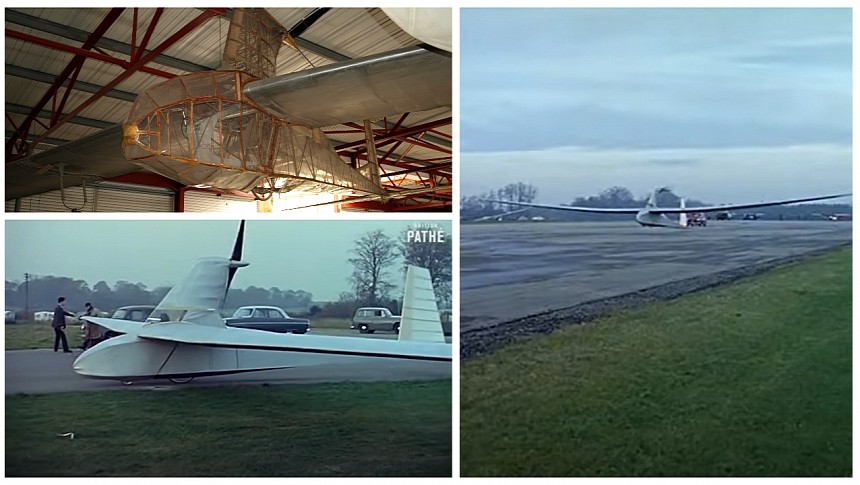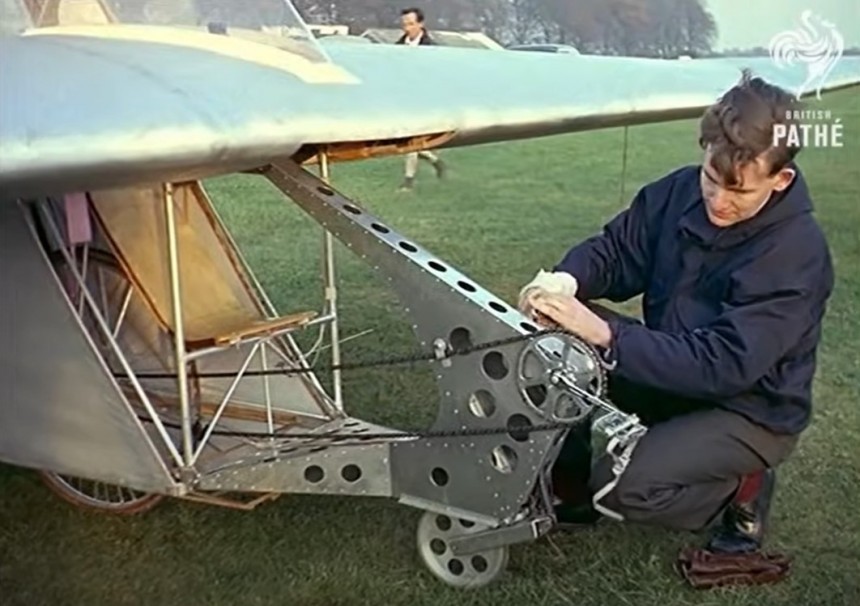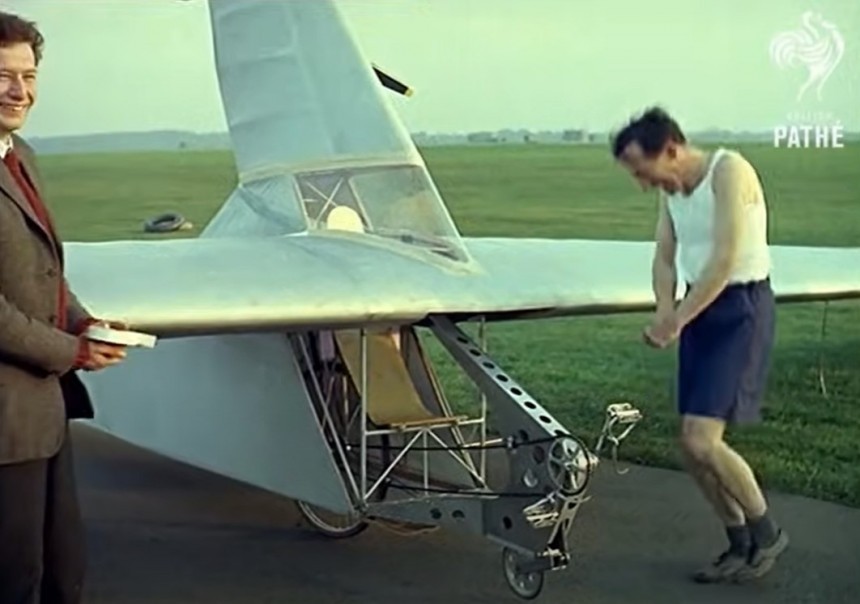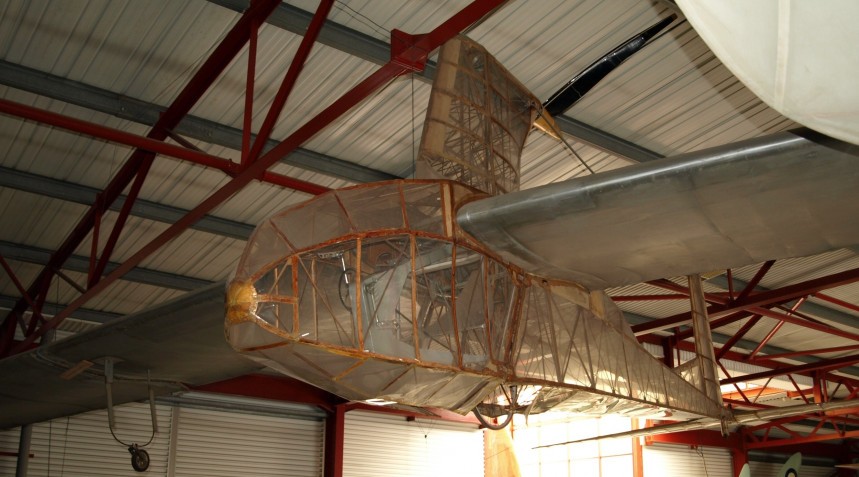A bicycle is a very convenient, affordable, and practical means to move about the city beating traffic while getting some exercise and not adding to the worsening climate issues. A bicycle is a lot of awesome things – but it can't fly.
A bicycle doesn't fly unless that bicycle is the world-famous SUMPAC.
SUMPAC is often described as the world's first flying bicycle, but it's more of a human-powered plane than a flying bike. In fact, that's what the name SUMPAC means: Southampton University Man Powered Aircraft, a contraption designed and built by Southampton post-graduate students in order to win a considerable cash prize. They never got around to winning it, but they got something better instead – a place in history.
SUMPAC made its public debut in 1961, after almost a year of hard work by the Southampton team comprised of David Williams, Ann Marsden, and Alan Lassiere, aeronautical engineering students eyeing the £50,000 Kremer prize offered by the Royal Aeronautical Society in a yearly competition. £50,000 is a lot of money even today (almost $65,000 at the current exchange rate), but winning the prize was more than just a cash grab: it was the prestige of winning a competition that seemed to have been created specifically to prove it was impossible.
Said competition required a human-powered aircraft to fly a one-mile (1.6-km) course in a figure of eight. What that meant was an aircraft that had no mechanical or motorized assistance, flying the one-mile distance and then taking turns to create an eight shape during flight. The goal was as high as the figure awarded in cash, and it would only be achieved in 1977. But SUMPAC was an admirable effort in the right direction.
In order to achieve human-powered flight, the designers crafted an exceptionally lightweight aircraft made with standard materials found in abundance after the war, like balsa, plywood, and aluminum. The initial version of the aircraft was covered in nylon and used sticky tape for joinery, while the powertrain consisted of pedals that gave it forward momentum and powered the large propeller.
The official stats of the SUMPAC list a total length of 24.9 feet (7.54 meters) and a wingspan of over 80 feet (24.4 meters), while empty weight was 128 lbs (58.1 kg). The main "engine," the human that would be doing the pedaling, was designated Derek Piggot, an expert glider pilot and instructor, who shed as much clothing as possible to keep the gross weight down to 268 lbs (121.6 kg).
The video available at the bottom of the page is of the historic first flight, which took place on November 9, 1961, at the Lasham Airfield in Hampshire – not the ideal month or place to be strolling around in shorts and a vest in the UK.
On its maiden flight, SUMPAC covered a distance of 210 feet (64 meters), soaring at 6 feet (1.8 meters) above the runway. It was far from the one-mile goal set by the competition, but the worst part was that SUMPAC couldn't make a turn. Over the next months, the team would improve and modify the initial design, totaling over 40 flights on various occasions, before a 1963 crash that caused severe damage to the very fragile construction.
SUMPAC's biggest achievements included a flight over a distance of 1,949 feet (594 meters) at the height of 15 feet (4.6 meters), reaching a top speed of 21 mph (33 kph/18 kn), and doing an 80-degree turn. The 1963 crash told the team that it was time to retire the aircraft, even though they still conducted repairs. SUMPAC was donated to the Solent Sky Museum in Southampton, where it still hangs on display today.
SUMPAC walked so SUHPA could run. SUMPAC never won the competition it was designed for, but it still became the world's first aircraft of this kind to make an officially authenticated takeoff and flight. Considering it went on to undertake over 40 flights and the fact that it would be improved in the months following its maiden journey, you could even say it had a storied, almost enviable career.
SUMPAC is a legend in this hybrid field, so it got the proper legend treatment in 2011, when another team from Southampton University created SUHPA, or the Southampton University Human Powered Aircraft, to mark the SUMPAC's 50th anniversary.
This one was built with carbon fiber reinforced polymer and used a time trial bicycle for propulsion on the runway and the takeoff. As a further upgrade, it also featured a solar-powered electric motor to theoretically remain airborne indefinitely. Piggot, the pilot trembling in his shorts and white top on the historic first flight of the SUMPAC, was invited to attend the SUHPA's first flight, which also took place at Lasham Airfield. A full circle if there ever was one.
SUMPAC is often described as the world's first flying bicycle, but it's more of a human-powered plane than a flying bike. In fact, that's what the name SUMPAC means: Southampton University Man Powered Aircraft, a contraption designed and built by Southampton post-graduate students in order to win a considerable cash prize. They never got around to winning it, but they got something better instead – a place in history.
SUMPAC made its public debut in 1961, after almost a year of hard work by the Southampton team comprised of David Williams, Ann Marsden, and Alan Lassiere, aeronautical engineering students eyeing the £50,000 Kremer prize offered by the Royal Aeronautical Society in a yearly competition. £50,000 is a lot of money even today (almost $65,000 at the current exchange rate), but winning the prize was more than just a cash grab: it was the prestige of winning a competition that seemed to have been created specifically to prove it was impossible.
In order to achieve human-powered flight, the designers crafted an exceptionally lightweight aircraft made with standard materials found in abundance after the war, like balsa, plywood, and aluminum. The initial version of the aircraft was covered in nylon and used sticky tape for joinery, while the powertrain consisted of pedals that gave it forward momentum and powered the large propeller.
The official stats of the SUMPAC list a total length of 24.9 feet (7.54 meters) and a wingspan of over 80 feet (24.4 meters), while empty weight was 128 lbs (58.1 kg). The main "engine," the human that would be doing the pedaling, was designated Derek Piggot, an expert glider pilot and instructor, who shed as much clothing as possible to keep the gross weight down to 268 lbs (121.6 kg).
On its maiden flight, SUMPAC covered a distance of 210 feet (64 meters), soaring at 6 feet (1.8 meters) above the runway. It was far from the one-mile goal set by the competition, but the worst part was that SUMPAC couldn't make a turn. Over the next months, the team would improve and modify the initial design, totaling over 40 flights on various occasions, before a 1963 crash that caused severe damage to the very fragile construction.
SUMPAC's biggest achievements included a flight over a distance of 1,949 feet (594 meters) at the height of 15 feet (4.6 meters), reaching a top speed of 21 mph (33 kph/18 kn), and doing an 80-degree turn. The 1963 crash told the team that it was time to retire the aircraft, even though they still conducted repairs. SUMPAC was donated to the Solent Sky Museum in Southampton, where it still hangs on display today.
SUMPAC walked so SUHPA could run. SUMPAC never won the competition it was designed for, but it still became the world's first aircraft of this kind to make an officially authenticated takeoff and flight. Considering it went on to undertake over 40 flights and the fact that it would be improved in the months following its maiden journey, you could even say it had a storied, almost enviable career.
This one was built with carbon fiber reinforced polymer and used a time trial bicycle for propulsion on the runway and the takeoff. As a further upgrade, it also featured a solar-powered electric motor to theoretically remain airborne indefinitely. Piggot, the pilot trembling in his shorts and white top on the historic first flight of the SUMPAC, was invited to attend the SUHPA's first flight, which also took place at Lasham Airfield. A full circle if there ever was one.




















